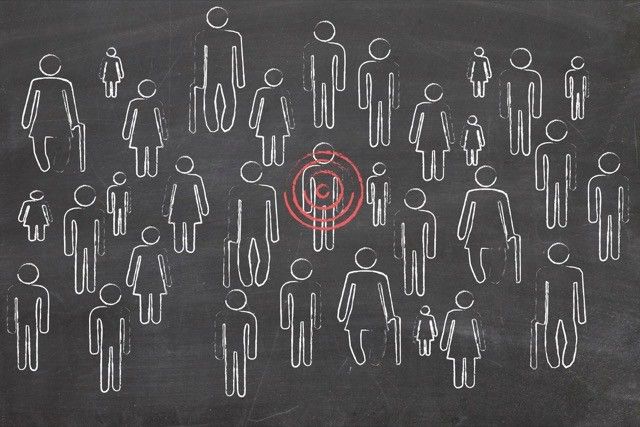During the Second World War the British 77th Brigade went behind enemy lines and used unorthodox tactics against the Japanese in Burma. There hasn't been a 77th since 1945, but it will be making its return this year with a new sort of tactic: psychological operations (PsyOps) via social media.
A number of militaries around the world—including those of the US, Israel, and the Islamic State (ISIS)—are already using social media to gather intelligence, spread propaganda, recruit soldiers, control overarching narratives, and communicate with other military groups. ISIS has been especially effective in using social and other online media outlets to its advantage in recruiting.
The Guardian called the 77th Brigade a "team of Facebook warriors," but if the Israeli Defense Forces (IDF) is any indication, their reach will spread far beyond Facebook: the IDF is active on 30 different platforms in six languages, and the United States' Defense Advanced Research Project Administration (DARPA) has included Pinterest and Kickstarter in its research studies.
How Do Militaries Use Social Media?
Because Facebook, Twitter, Instagram, LinkedIn, and other social networks are ever-present in our lives, the potential for their use by the military is nearly limitless. However, a few specific types of uses have drawn a great deal of attention.
Sentiment Analysis
An interesting science that sees use in the business and military sectors, sentiment analysis seeks to generate a profile of how a set of users feels about a particular topic. For example, a marketing campaign that seeks to increase interest in a new product could use specific metrics to see whether users of social media had generally positive or generally negative feelings toward the product.
The military could use a form of sentiment analysis when preparing to conduct a propaganda campaign, engage in diplomacy, or recruit citizens as intelligence assets—all of these operations benefit from an understanding of how the public feels on a particular issue.
The chances of success in psychological and intelligence operations can be effected by the general feelings of the population of interest, and sentiment analysis can provide a window into these feelings that's much more natural and wide-ranging than other methods, as well as being less intrusive.
Spreading Propaganda
After getting an idea of how a specific group is feeling via sentiment analysis, the results can be used in another way. One paper (download the PDF) gave this example:
[W]hen anti-government messages are spread in social media, government would want to spread counter messages to balance that effort and hence identify people who are more likely to spread such counter messages based on their opinions.
It's easy to see how this could be put to use when a military is engaged in a war in another country; having the support of the citizenry on the ground can be a huge help to both sides in the war, and being able to spread messages through social media in this way would be extremely valuable. Even if we know not to trust social media, the things we see on Facebook and Twitter can make a big difference in our opinions.
The South Korean National Intelligence Service made it very clear how dangerous this technology could be by posting 1.2 million fake tweets in an effort to swing the presidential vote to their preferred candidate.
These methods of spreading propaganda through social media could also serve to help a military group develop contacts within another military organization, on the ground in a hostile country, or with underground rebel cells.
Controlling Narratives
In addition to determining the opinions of groups of users, militaries and intelligence agencies also seek to influence them, not just by spreading propaganda, but by actually influencing specific conversations. One of the methods that's used by the US military is the use of "sock puppets," or fake accounts controlled by PsyOps soldiers.
A piece of software called Metal Gear allows users to create and manage up to 10 fake accounts based all over the world. These accounts can then be made to take part in conversations on various issues, and present what looks like a unified group of people who hold the same opinion.
Suddenly, instead of a single agent trying to sway a conversation, you can have dozens or hundreds, all taking part in coordinated action—and each with a "convincing background, history, and supporting details." A 2011 article in The Guardian quotes US Central Command saying that this technology would only be used in languages other than English, so that US citizens wouldn't be exposed to this sort of manipulation.
Whether or not you think that's actually the case is up to you.
An even more nefarious way of suppressing dissent using sock puppets is to have a large number of them report the content that's being posted by a single user as spam or abuse, causing that user to repeatedly get banned from the service. Instead of trying to sway the conversation, the controller of the sock puppets can now dominate it.
Locating Persons of Interest
While you may not geotag your tweets or Facebook updates, that doesn't mean that you're not sharing information about your location. Defense One reported on a company called SnapTrends, which works with the government to use a number of indicators to track you down based on a single social network update.
This technology was used in the aftermath of the Boston Marathon bombing in 2013 to find people who had access to the suspects' computers, greatly speeding up the process of apprehending the suspects. The type of social network analysis used by SnapTrends can also reveal additional information about you and instantly pull up a history of your social media actions.
Computer World reported on another group of data scientists who used social media to identify locations of interest, four sites in the Homs area of Syria that held potential weapons of mass destruction. After identifying the sites, the researchers recommended that the military get in contact with an opposition battalion to make sure that those sites would be protected if the regime falls, when terrorists could be looking to use the chaos to steal weapons.
Infiltration
If an intelligence agency or military wanted to plant malware within the systems of a specific group of people, for intelligence gathering, disruption, or a cyber attack, doing it through social media could be a very effective strategy (certainly easier than trying to get a member of the opposing military force to plug in a USB stick).
The Syrian opposition has seen some of its information stolen by hackers who have posed as attractive women on Skype—they send pictures to their targets that identify the operating system that they're on and then download malware onto the target's computer. Battle plans, maps, weapons and ammo lists, and supply routes have been stolen, according to The Register.
Although more cyber-warfare-savvy groups might be less likely to fall for this sort of tactic, it seems very likely that first-world militaries will be looking exploit social media in this way.
The Future
While the intelligence-gathering and propaganda-spreading capabilities of social media are clear, it's less clear where this technology will move in the future. With the re-establishment of the British 77th Brigade, we'll likely see even more attention on this matter around the world in the near future.
What do you think the future holds for the military's use of social media? Do you think the use of fake accounts is ethical? Do you feel safe knowing that the US, the UK, and other countries can extract huge amounts of your data based on just a few posts? Share your thoughts below!
Image credits: Arms with weapons Via Shutterstock, assessmet via Shutterstock; Xvlun via Wikimedia Commons; Targeted Customer in Bulls-Eye, unlock security lock via Shutterstock.






